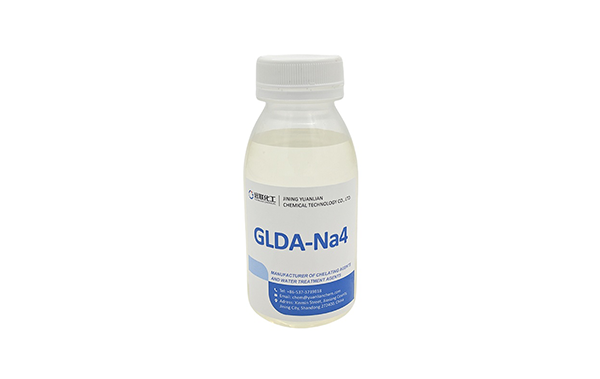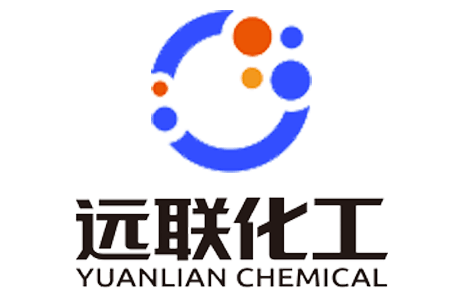
GLDA vs EDTA: Is The New Eco-Friendly Chelator The Ultimate Winner? Key Differences & Selection Guide
Introduction
In numerous sectors—from industrial and household cleaning to agriculture—chelating agents play a vital role in "grabbing" and "stabilising" metal ions. For decades, Ethylenediaminetetraacetic Acid (EDTA) has been a market leader due to its powerful chelating capacity. However, with increasingly stringent global environmental regulations and a growing focus on sustainability, EDTA's major flaw—its poor biodegradability—has become a significant liability.
Enter a green alternative derived from renewable raw materials: Tetrasodium Glutamate Diacetate (GLDA). This raises a critical question for formulators and businesses: how do GLDA and EDTA truly compare? This article provides a comprehensive analysis to guide your decision.

Head-to-Head: GLDA vs EDTA at a Glance
Here is a clear comparison table highlighting their core differences:
| Feature | Tetrasodium Glutamate Diacetate (GLDA) | Ethylenediaminetetraacetic Acid (EDTA) | The Verdict |
|---|---|---|---|
| Source & Biodegradability | Derived from plant-based sugars (e.g., corn, wheat). Readily biodegradable (OECD 301F >60%). | Petrochemical derivative. Poorly biodegradable, persistent in the environment. | GLDA is the clear winner for environmental profile. |
| Chelating Power (pH Range) | Excellent chelation across a wide pH range, particularly effective in neutral to alkaline conditions. | Chelating efficiency decreases in alkaline conditions. | GLDA is more versatile, ideal for detergents. |
| Safety & Eco-Toxicity | Plant-based origin, low ecotoxicity, skin-friendly, and low irritation. | Toxic to aquatic life, some salts can be skin irritants. | GLDA is safer for people and the planet. |
| Surface Activity & Compatibility | Inherent surface activity, improves compatibility with other formulation ingredients. | No surface activity, can interact negatively with some components. | GLDA enhances overall formulation performance. |
| Cost Perspective | Higher initial raw material cost, but offers advantages in overall environmental and compliance costs. | Mature production process, lower initial purchase cost. | EDTA has a lower upfront cost, but GLDA offers better long-term value. |
In-Depth Analysis: Why GLDA is the Future-Proof Choice
1. Environmental Profile: From Persistence to a Closed Loop
This is GLDA's most decisive advantage. EDTA is highly stable in the environment and resists microbial breakdown. It not only persists in water bodies but can also re-release sequestered heavy metals, causing secondary pollution and disrupting wastewater treatment plants.
In contrast, GLDA is rapidly broken down by microorganisms in treatment plants and the natural environment into water, CO₂, and inorganic salts, preventing any long-term accumulation. For companies seeking compliance with strict eco-labels (like the EU Ecolabel), this is a critical factor.
2. Performance in Key Applications
-
Detergents & Cleaners:
-
EDTA: A traditional builder that softens water, but its efficiency drops in alkaline conditions. Its environmental impact is leading to restrictions in many regions.
-
GLDA: Excels in hard water and its superior calcium chelation power effectively activates enzymes, boosting cleaning performance. Its biodegradability allows brands to leverage strong "eco-friendly" marketing claims.
-
-
Agriculture (Micronutrient Fertilisers):
-
EDTA: Strongly chelates Fe, Zn, but its stability in soil is pH-dependent, and its persistence is a growing concern.
-
GLDA: Offers a "smarter" chelation, effectively releasing nutrients in the plant root zone for better uptake. Its harmless degradation products do not burden the soil.
-
-
Personal Care:
-
Due to its natural origin and low irritancy, GLDA is increasingly replacing EDTA as a stabiliser and performance booster in shampoos, shower gels, and especially in premium and baby care lines.
-
3. Regulatory Compliance & Market Trends
Globally, the regulation of persistent, bioaccumulative, and toxic (PBT) substances is tightening. EDTA is already a substance of concern under the EU's REACH regulation. Adopting GLDA helps companies proactively mitigate future regulatory risks and strengthen their brand's sustainable image.
Selection Guide: How to Make the Right Choice
While GLDA's advantages are compelling, the right choice depends on your specific needs.
-
Choose GLDA if:
-
You are selling products in regions with strict environmental regulations (e.g., the EU, UK).
-
You want to leverage "green," "biodegradable" claims to enhance your brand value.
-
Your application is in home care, personal care, or organic agriculture where safety and environment are paramount.
-
Your formulation operates in a neutral or alkaline pH environment.
-
-
Consider EDTA (for now) if:
-
Your primary and absolute constraint is upfront cost, with no current environmental pressures.
-
Your application is in a specific industrial process where biodegradability is not a concern, and GLDA substitution testing is incomplete.
-
Conclusion and Call to Action
In summary, Tetrasodium Glutamate Diacetate (GLDA), with its excellent biodegradability, robust chelation performance, superior safety, and perfect alignment with the circular economy, undoubtedly represents the future of chelation technology. It is not merely an EDTA substitute but a value-added, performance-enhancing upgrade for your products.
Ready to future-proof your formulations?
Make the switch to a chelator that aligns with modern environmental standards and market demands. Contact us today to request a free GLDA sample and consult with our technical experts. Discover how GLDA can improve your product's performance and its environmental footprint.
Yuanlian Chemical specializes in the production of polyaspartic acid (PASP),tetrasodium iminodisuccinate(IDS), GLDA, MGDA etc. with stable quality and excellent quantity!





Contact us